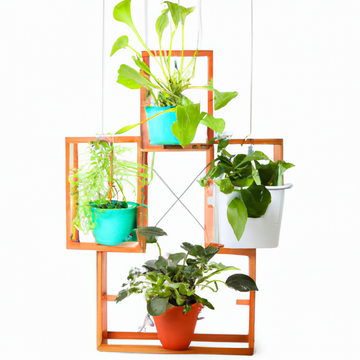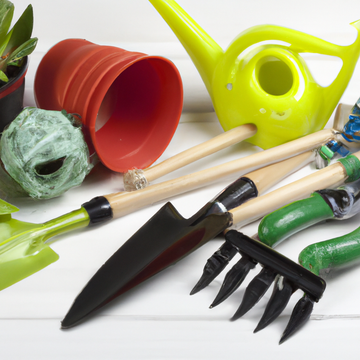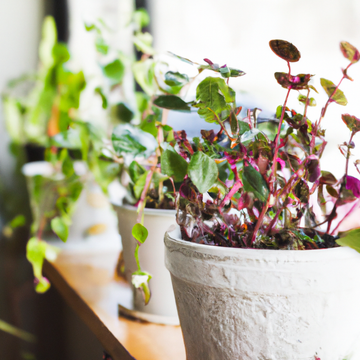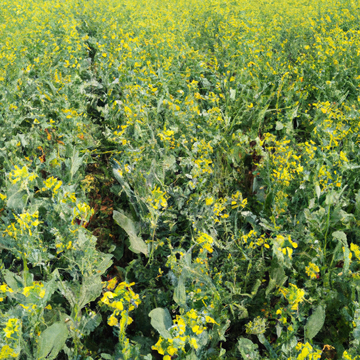12 Vegetables You Can Grow Easily in Grow Bags in 2023
by GOLDDUST- Rethink&Revive on May 21, 2023
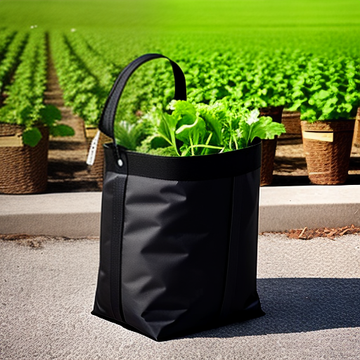
Are you looking for an easy and efficient way to grow vegetables at home? Look no further than grow bags! These simple, portable containers allow you to cultivate a variety of vegetables right on your doorstep. Plus, they’re affordable and environmentally friendly. In this blog post, we’ll introduce you to 12 delicious vegetables that can be easily grown in grow bags in 2023. Get ready to discover the joys of homegrown produce – without any hassle or fuss!
Lettuce

Lettuce is one of the easiest vegetables to grow in a grow bag. It’s also perfect for those who are new to gardening! With its shallow roots, lettuce doesn't require a lot of soil depth and can thrive in small spaces.
There are many different types of lettuce you can grow in your bag – from the classic green variety to more colorful options like red leaf or butterhead. You can even mix and match different varieties together for salads with a range of textures and flavors!
To get started, simply fill your grow bag with potting soil and plant your seeds according to their specific instructions. Water regularly and make sure that the soil stays moist but not waterlogged.
Once your lettuce has grown, harvest it by cutting off just the outer leaves so that the inner ones can continue to develop. This will allow you to enjoy fresh, homegrown salad greens all season long!
Spinach

Spinach is a leafy green vegetable that is easy to grow in grow bags. It's packed with vitamins and minerals, making it an excellent addition to any diet.
When growing spinach in a grow bag, choose a variety that does well in containers. Some good options include Baby Leaf, Bloomsdale Long Standing, and Space Hybrid.
To get started, fill your grow bag with nutrient-rich soil and plant your seeds according to the package instructions. Keep the soil moist but not waterlogged as spinach doesn't like wet feet.
Once your plants start to sprout, thin them out so they have room to grow. Spinach grows quickly and can be harvested when the leaves are young and tender or left to mature for larger leaves.
In terms of care, make sure your plants receive plenty of sunlight or artificial light if growing indoors. Fertilize regularly with an organic fertilizer or compost tea for optimal growth.
By following these simple steps, you'll soon have fresh spinach at your fingertips!
Kale

Kale is a leafy green vegetable that has been gaining popularity in recent years due to its nutritional benefits. It is packed with vitamins A, C, and K and several other minerals like calcium and potassium.
One of the great things about kale is how easy it is to grow in grow bags. You can simply sow the seeds directly into the bag or start them indoors and transplant them when they are big enough.
Kale prefers cooler temperatures, making it an excellent choice for fall and winter gardening. In fact, colder weather often makes the leaves sweeter!
There are many different varieties of kale available – some have curly leaves while others have flat leaves. Some are purple while others are green. Each variety has its unique flavor profile, so don't be afraid to try different types.
Kale can be used in a variety of dishes - from salads to stir-fries! You can also sauté it with garlic or add it to soups for added nutrition.
Growing kale in grow bags is an excellent option if you're looking for a low maintenance yet highly nutritious crop that will keep you healthy all season long!
Chard

Chard is a versatile leafy green that can easily be grown in grow bags. It's also known as Swiss chard or silver beet and comes in a variety of colors including green, red, and yellow.
One of the great things about growing chard in grow bags is that you can easily move them around to get the optimal amount of sunlight. Chard prefers partial shade but needs at least 4-5 hours of direct sunlight daily.
When planting chard seeds, it's important to plant them about an inch deep and space them out about 2-3 inches apart. You can expect your chard to start sprouting within one to two weeks.
Harvesting your chard is easy - simply cut off the outer leaves when they're mature enough for consumption. The inner leaves will continue to grow until they're ready for harvesting too.
Chard is not only delicious but it's also packed with nutrients including vitamins A, C, K, as well as iron and magnesium. Plus, it's low in calories making it a healthy addition to any meal.
Radishes

Radishes are a quick-growing and low-maintenance vegetable that can easily be grown in grow bags. These crunchy little root vegetables add a zesty flavor to salads or sandwiches, making them an excellent addition to any garden.
One of the great things about growing radishes is that they can be harvested relatively quickly compared to other crops. In fact, some varieties can be ready for harvest in as little as four weeks! This means you can enjoy fresh, home-grown radishes without having to wait all season long.
When it comes to planting radishes in grow bags, make sure you choose a variety that will fit comfortably inside your bag. Some smaller varieties like French Breakfast or Cherry Belle work well in containers while larger types may need more space.
Radish seeds should be planted just below the soil surface and watered regularly until they sprout. Once the seedlings emerge, thin them out so each plant has enough room to grow properly.
Growing radishes in grow bags is an easy way for beginners and seasoned gardeners alike to enjoy delicious homegrown veggies with minimal effort required!
Carrots

Carrots are a popular vegetable that can be grown easily in grow bags. They are a great source of beta-carotene, which is essential for good eye health and also helps boost the immune system. Carrots come in different colors such as orange, purple, red and white.
When planting carrots in grow bags, it's important to use loose soil that has good drainage. Sow the seeds about half an inch deep into the soil and cover them with a light layer of compost or vermiculite. Carrots need consistent moisture but avoid overwatering as this can cause root rot.
Thin out young plants when they reach about 2 inches tall so that each plant has enough space to grow properly. Be sure to remove any rocks or other debris from the soil before planting as these can cause deformities in your carrots.
Once your carrots have matured (usually between 60-90 days), you can harvest them by gently pulling them up from the ground. Enjoy fresh carrot sticks raw or cooked in soups, stews or stir-fries for added nutrition and flavor!
Beets

Beets are a versatile and easy-to-grow root vegetable that can be grown in grow bags with ease. They come in different colors, including red, golden, and even striped varieties. Beets are rich in nutrients such as fiber, vitamin C, iron, and folate.
One of the best things about growing beets is that you can use both the roots and leaves. The roots can be roasted or boiled to make a tasty side dish or used raw in salads for a crunchy texture. The leaves of young beet plants are also edible and have a similar taste to spinach.
Beets prefer cooler temperatures but can still thrive in warmer climates if given enough water. It is essential to keep the soil consistently moist during germination but avoid overwatering after the plants establish themselves.
When planting your beet seeds or seedlings into grow bags, you should plant them up to three inches apart from each other to give them room to mature properly. Make sure they receive at least six hours of sunlight per day.
Growing beets is an excellent choice for beginners looking for an easy yet nutritious vegetable crop option for their grow bags. With proper care and maintenance, you'll have plenty of fresh produce throughout the growing season!
Potatoes

Potatoes have been a staple food for centuries and are grown in almost every part of the world. They are versatile, delicious, and easy to grow. In fact, they can be grown very easily in grow bags.
When it comes to growing potatoes in grow bags, there are a few things you need to keep in mind. First of all, choose the right variety of potato that is suitable for container gardening. Second, ensure that the soil mix is nutrient-rich and well-draining.
To start growing potatoes in your grow bags, fill them with about 6 inches of soil mix and plant your seed potatoes about 4-6 inches deep into the soil. As your plants begin to sprout and reach around 8 inches tall, add another layer of soil mix on top until only the top leaves remain visible.
One advantage to using grow bags is that they allow for better drainage than traditional garden beds which can prevent rotting or disease from waterlogged roots. Additionally, because you can move them around as needed - even inside if necessary - they offer more flexibility than traditional garden plots.
Harvesting your potatoes when they're ready is simple too – just tip out your bag onto some newspaper or tarpaulin so you don't lose any!
Tomatoes

Tomatoes are a versatile and popular vegetable that can be easily grown in grow bags. They come in various colors, shapes, and sizes such as cherry tomatoes or beefsteak tomatoes. One of the best things about growing tomatoes in grow bags is that they don't require much space. You can even place them on your balcony or windowsill.
Make sure to choose a variety of tomato that is suitable for your climate and has good disease resistance. Tomatoes prefer warm weather and plenty of sunlight, so it's essential to keep them in a spot where they can get at least six hours of direct sunlight per day.
When planting tomato seeds or seedlings into grow bags, make sure to use high-quality soil mix with lots of organic matter like compost or aged manure. This will provide the necessary nutrients for healthy growth.
Watering is crucial when growing tomatoes in grow bags since they have limited soil volume compared to traditional garden beds. Water regularly but avoid overwatering as this may cause root rot.
To encourage fruit production, feed your tomato plants with an all-purpose fertilizer every two weeks during the growing season. You can also pinch off any suckers (side shoots) that develop between the main stem and branches as these tend to divert energy away from fruit production.
Growing tomatoes in a grow bag is an excellent way for beginner gardeners to start their gardening journey while enjoying fresh home-grown produce throughout the summer months!
Peppers

Peppers are a popular vegetable that can grow easily in grow bags. They come in different varieties and colors such as red, green, yellow and even purple! You can choose from sweet peppers or spicy ones depending on your taste buds.
When planting peppers in grow bags, it's important to ensure they have enough space for their roots to spread out. You can plant one pepper plant per bag or multiple if the bag is large enough. Additionally, make sure they receive plenty of sunlight and water regularly.
Peppers are also a great source of vitamins C and A which help boost immunity and promote healthy vision respectively. Plus, they add flavor to numerous dishes like stir-fries, salads or stuffed peppers.
If you're new to growing peppers, try starting with milder varieties like bell peppers before moving onto spicier ones like jalapenos or habaneros. With proper care and attention, you'll soon be harvesting fresh homegrown peppers straight from your own garden!
Eggplant

Eggplant is a versatile vegetable that can be used in many different dishes. It has a unique texture and flavor that adds depth to any recipe it's used in.
One of the great things about growing eggplant in grow bags is that they don't take up much space, making them perfect for small gardens or balconies. They also thrive well indoors or outdoors as long as they receive enough sunlight.
To grow eggplants successfully, plant them in nutrient-rich soil and water regularly to keep the soil moist but not waterlogged. You can expect your first harvest within 60-80 days after planting.
There are many delicious ways to prepare eggplants! Roasting, grilling or frying slices of eggplant are some popular methods.
Whether you're adding it to a stir-fry or using it as a substitute for meat in vegetarian lasagna, growing your own fresh eggplants will elevate your cooking game and impress all those who taste your flavorful dishes!
Beans

Beans are versatile vegetables that can be grown easily in grow bags. They come in many varieties such as green beans, snap beans, and pole beans. The great thing about growing beans is that they require very little maintenance.
To get started with growing beans in grow bags, fill the bag with a well-draining potting mix and plant your bean seeds about 1-2 inches deep. Keep the soil moist but not waterlogged and make sure to provide enough sunlight.
One of the benefits of growing beans is that they are nitrogen-fixing plants which means they can improve soil fertility by converting atmospheric nitrogen into a usable form for other plants.
Harvesting time for beans varies depending on the variety you choose to grow. Snap beans typically take around 50-60 days while pole beans may take up to 80 days before harvest.
Growing Beans in grow bags is an easy and rewarding experience for any gardener looking to add fresh produce to their table.
Conclusion
Grow bags are an excellent option for anyone who wants to start growing their vegetables. With the right soil mix and proper care, you can successfully grow a variety of plants in these containers without any hassle.
Not only are they affordable and easy to use, but they’re also perfect for small spaces like balconies or patios. Plus, you have the added benefit of being able to move them around as needed.
So why not give it a try? Start with one or two of your favorite veggies from our list and see how well they do in a grow bag. Who knows? You might just discover your green thumb!

